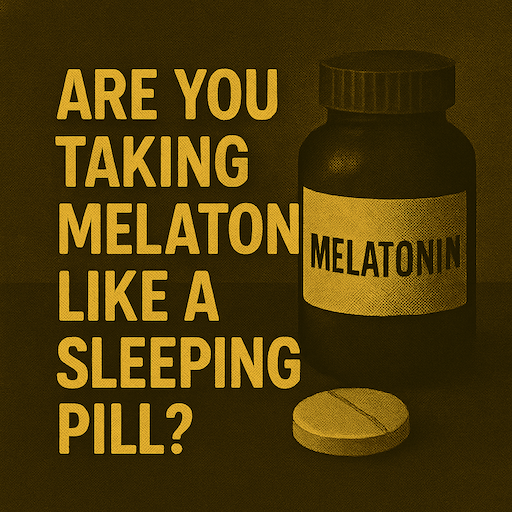The Melatonin Mistake: Why Bigger Isn’t Better
If you’re reaching for melatonin to knock yourself out at night—but waking up feeling groggy, restless, or even wired—you’re not alone. Many people mistakenly treat melatonin like a sedative or sleeping pill. But here’s the truth: melatonin isn’t a knockout drug—it’s a circadian signal.
Melatonin helps regulate your internal biological clock, signaling to your body that it’s time to wind down. It doesn’t directly induce sleep like traditional sleep aids. That distinction matters—especially when it comes to how much you take.
Most People Are Taking Way Too Much Melatonin
Typical over-the-counter melatonin supplements come in high doses—5 to 10 milligrams or more per tablet—but research shows that less is more.
A 2022 review published in Biomedicines supports low-dose melatonin—as little as 0.3 to 1 milligram—to effectively signal sleep without causing next-day drowsiness. Not only are high doses unnecessary, but they can also cause melatonin receptor desensitization, making the supplement less effective over time.

Are You Taking Melatonin Like a Sleeping Pill? You Might Be Doing It Wrong
Rethink your nightly routine with science-backed insight.
Melatonin Works Best When It’s:
✅ Low-Dose
✅ Timed Right
✅ Part of a Light-Dark Routine
To truly align melatonin with your body’s natural rhythms, timing is key. Ideally, it should be taken 30–90 minutes before your natural bedtime, and paired with a consistent light-dark cycle—meaning bright light exposure during the day and dim, warm lighting in the evening. This helps your body recognize the difference between day and night, reinforcing melatonin’s effects naturally.
Who Should Use Melatonin?
Melatonin can be beneficial for specific cases such as:
-
Jet lag
-
Shift work
-
Delayed sleep phase disorder
-
Older adults with declining natural melatonin production
But even in these cases, experts recommend microdoses—starting as low as 0.3 mg.
The Takeaway
Melatonin isn’t meant to be used like a sleeping pill. Instead, treat it as a gentle nudge for your circadian rhythm—not a sledgehammer. By keeping your dosage low and aligning it with your body’s natural cues, you’ll improve sleep quality without the grogginess.
TL;DR:
Smaller doses. Smarter timing. Better sleep.
Sources:
Biomedicines 2022 Review – Melatonin for Sleep Disorders
SEO Keywords: melatonin dosage, melatonin side effects, how to take melatonin, circadian rhythm sleep, melatonin grogginess, best time to take melatonin, low dose melatonin benefits, melatonin for jet lag, melatonin for shift work
Let me know if you’d like this formatted as a blog post or turned into a graphic!
Tags: General
post comments
Together We Rise: A Campaign for Everyone




